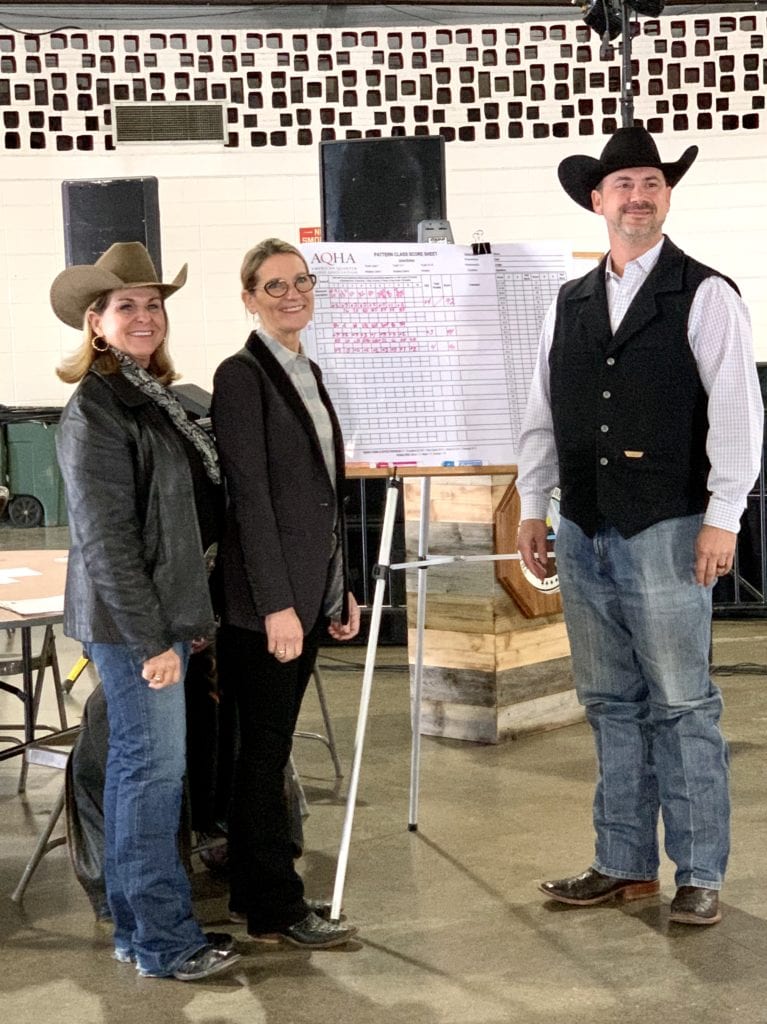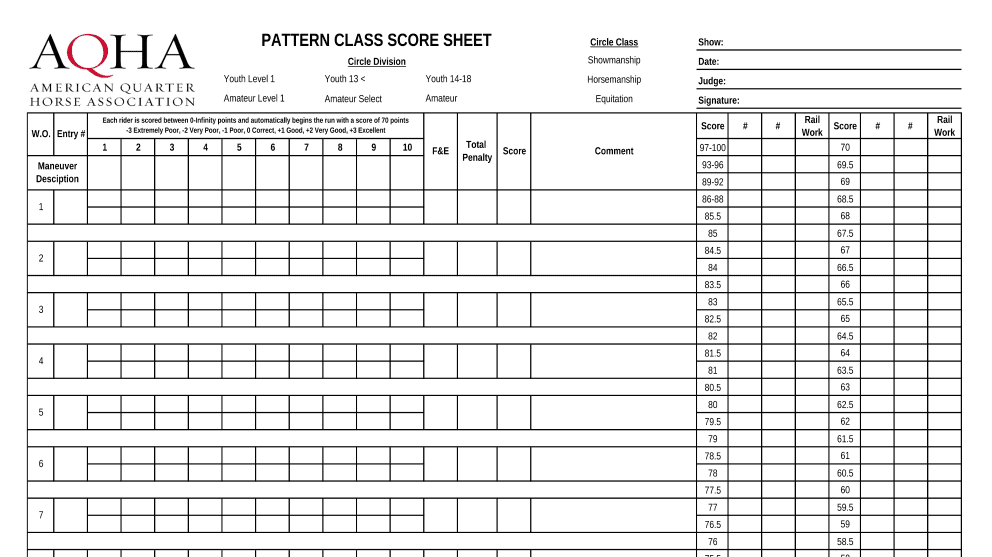With the new scoring systems for equitation, horsemanship, and showmanship debuting this year, GoHorseShow had the pleasure of attending a lecture at the All American Quarter Horse Congress. The new rules and changes were implemented to help clarify and simplify the judging process. This new system was approved to be used at AQHA, APHA, and NSBA shows.
The demonstration was taught by industry professionals and judges: Stephanie Lynn (NSBA), Patti Carter (AQHA), and David Dellin (APHA). Each horseman/horsewoman proudly represented their association while providing valuable insight and opinions on how the new scoring system has affected the judging of pattern classes.
The lecture started with a brief overview of each individual’s history in the equine industry and their backgrounds. Then, the conversation shifted to how the implementation of the new scoring system has made judges more accountable when judging and placing the pattern classes.
Topics highlighted the fact that the scoring for these pattern classes is now very similar to the scoring of trail classes. Patti Carter said, “This not only provides an easy to understand system for exhibitors, but also gives newly carded judges a system they are already somewhat familiar with through judging either trail or western riding classes.”
Every exhibitor starts with the base score of 70, and according to the execution of their maneuvers, points can be added or subtracted from 70 to create their final pattern score.
Another essential addition to the scoring system is the F&E score (Form and Effectiveness). F&E scoring was explained as a way to judge the horse and rider for their overall presentation and efficacy while completing their pattern.
Lastly, two portions of the score sheet that were kept somewhat the same but were clarified were the Comment and Penalty sections. In the Comment section, judges are urged to leave short notes on what they liked or disliked about the horse and rider while on pattern.
 Lynn, Carter, and Dellin all stressed the importance of judges leaving comments on every exhibitor’s run. Not only does the comments section allow the judge to have a point of reference for each exhibitor and their horse, but it will enable the exhibitor to see a more in-depth perspective on their pattern, rather than just a score and their final placing.
Lynn, Carter, and Dellin all stressed the importance of judges leaving comments on every exhibitor’s run. Not only does the comments section allow the judge to have a point of reference for each exhibitor and their horse, but it will enable the exhibitor to see a more in-depth perspective on their pattern, rather than just a score and their final placing.
The penalty section defines what a Minor, Major, and Severe penalty are. Minor penalties are 3 points, Major penalties are 5 points, and Severe are 10 points. Representing AQHA, Patti Carter stated that, “Not only are the specific penalties in these pattern classes clearer, but the penalty groupings are the same across multiple classes, like between horsemanship and equitation. A break of gait in the horsemanship is now the same deduction as it would be in the equitation.”
The new scoring system appears to be a burgeoning success in the industry. It is a more structured system that provides track-ability with scoring, especially on a larger scale at shows like the All American Quarter Horse Congress and World Championship Shows.
These highly respected horsemen and horsewomen provided an insightful discussion on how the scoring system functions and even gave live scoring demonstrations using YouTube videos of winning runs. This added instruction and explanation solidified how the new scoring system will have a positive long-term effect on the equine industry.
Click here to view an example of recent score sheets of the Amateur Showmanship Level 3 from the AQHA World Show, which illustrate this new scoring system.








